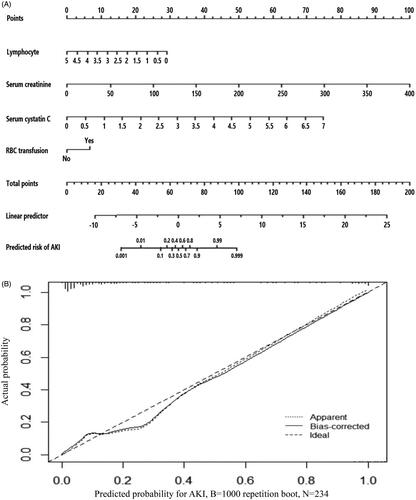Figures & data
Table 1. Baseline characteristics of non-AKI group and AKI group in included TBI patients.
Table 2. Univariate and multivariate logistic regression analysis of risk factors for AKI after TBI.
Figure 2. (A) Nomogram of the constructed logistic model for predicting AKI in included TBI patients. The nomogram consisted of four variables including lymphocyte, serum creatinine, serum cystatin C and records of RBC transfusion. Based on the sum of corresponding points of each variable, total points could be calculated and therefore evaluated the risk of AKI. (B) Calibration plot for predicting AKI in included TBI patients.

Table 3. Predictive value of cystatin C and constructed model for predicting AKI after TBI.

